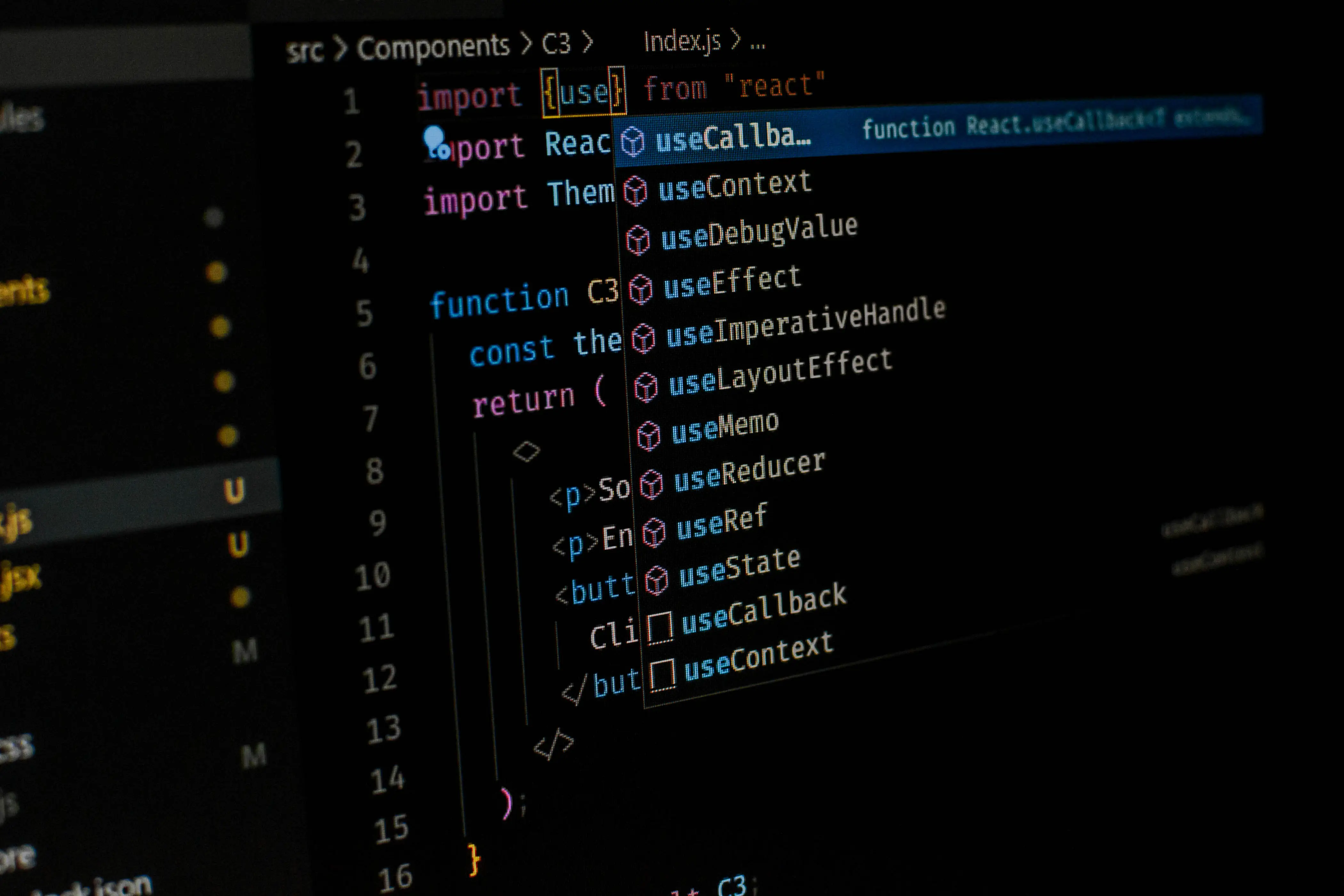
In today's software world, back-end development forms the backbone of an application. This layer, where users do not directly interact but all data is processed, stored and presented when necessary, is one of the basic elements that determine the performance, security and scalability of a software. That's exactly why choosing the right back-end framework is a critical decision for software developers and companies.
What is a Back-End Framework and Why is it Important?
Back-end frameworks are tools that provide developers with the basic infrastructure of a software, making the process more efficient and reliable. Most frameworks offer basic functions such as database management, user authentication, caching, error management and API creation ready-made. In this way, developers can focus directly on the logic and functionality of the application instead of writing everything from scratch. Choosing the right framework speeds up the development process and directly affects the scalability and maintainability of the project.
For example, while the framework to be selected for a high-traffic e-commerce site should be able to support thousands of users at the same time without any problems; a startup may need to choose a framework that will allow faster prototyping during the MVP (Minimum Viable Product) development process. Since each technology has different advantages and areas of use, it is of great importance to determine the most suitable option for the needs of the project.

What to Consider When Choosing a Framework?
Framework selection should not be made solely based on popularity or trend. Whether the selected technology will be long-term, the frequency of updates, the size of the developer community and the conveniences it provides should be taken into account. Here are some basic criteria to consider when choosing the right back-end framework:
- Speed and Performance: How the framework works on the server side, response times and data processing speeds are important. Does it offer a solution that can handle high traffic?
- Scalability: If you are starting with a small project and have a possibility of growing in the future, the framework should be scalable to handle large data and user loads.
- Flexibility and Modularity: Can the framework be easily integrated into different architectures and technologies? Does it support different development approaches such as microservices or monolithic architecture?
- Security: Is it strong against cyber attacks? Does it regularly fix security vulnerabilities? For example, frameworks such as Django and Laravel offer built-in security mechanisms, while lightweight frameworks such as Express.js may require additional configurations in this regard.
- Learning Curve and Documentation: How difficult is the learning curve of the framework? Is the developer documentation comprehensive and up-to-date?
- Community Support: A large and active community ensures that problems are resolved quickly. For example, community support for Python and JavaScript-based frameworks is quite strong.
- Usage Areas: Is the framework strong in a specific area or does it appeal to a wide range? For example, Flask and Django are generally preferred in data science and artificial intelligence projects, while Node.js and Express.js are more commonly used in real-time applications.
How Were the Most Preferred Back-End Frameworks Determined?
In determining the back-end frameworks we will cover in this article, we took into account not only popularity but also real-world usage scenarios. We selected the best frameworks according to the following criteria:
- Google Search Volume and Trends: Current statistics on which frameworks developers search for the most were analyzed.
- Community and Support: Active developer communities on Stack Overflow, GitHub, Reddit and other platforms were examined.
- Enterprise Usage Rate: The frameworks most preferred by large companies and startups were listed.
- Scalability and Performance Values: How they performed in large-scale projects in the real world was evaluated.
- Developer Experience and Ease of Learning: Which frameworks are more accessible to developers were examined.
Based on these criteria, we will examine in detail the most popular and powerful back-end frameworks of 2024. Our goal is not only to list the frameworks, but also to help you understand which technology is more suitable for which projects.
Now, let's take a closer look at the 10 most preferred back-end frameworks.

Top 10 Most Popular Back-End Frameworks:
Back-end frameworks provide developers with a ready-made infrastructure that can be used to set up the server side of applications, manage databases, and perform API integrations. We based our analysis on factors such as popularity, performance, scalability, and community support to determine the most preferred back-end frameworks by developers and companies in 2024.
Below, we will examine the 10 most preferred back-end frameworks by developers in 2024 in detail.
1. Node.js
Node.js is a platform that allows JavaScript to run on the server side and offers developers a fast and efficient working environment with its non-blocking, event-driven architecture. Thanks to its asynchronous structure, it can process a large number of requests at once and does not experience any performance loss. It is often preferred for real-time applications, API development, and microservice architectures. Giant companies such as Netflix, LinkedIn, and Uber also use Node.js.
- Advantages: Fast and asynchronous operation, large plugin ecosystem (NPM), full integration with JavaScript.
- Disadvantages: Not suitable for CPU-intensive operations, Callback Hell problem (can be arranged with Promise or async/await).
2. Django
Django is a Python-based framework that offers a ready and secure infrastructure to developers with its "batteries-included" approach. It is widely preferred from startups to large companies thanks to its fast development process and modular structure. Companies such as Instagram, Pinterest and Spotify use Django. It is ideal for data-intensive projects and API development areas.
- Advantages: Strong security measures, ease of database management thanks to ORM.
- Disadvantages: Flexibility may be limited, sometimes it may feel like a rigid structure in large projects.

3. Spring Boot
Spring Boot is a Java-based microservice framework and is especially suitable for enterprise-wide projects. Fast applications can be developed with simple configurations. It is widely used in areas such as banking, finance and ERP systems.
- Advantages: Full compatibility with microservice architecture, high performance and flexibility.
- Disadvantages: The learning curve can be steep for beginners.
4. Express.js
Express.js is a minimal and flexible web framework based on Node.js. It is widely used in API development and offers flexibility to developers.
- Advantages: Lightweight and fast, wide world of plugins, easy integration.
- Disadvantages: Built-in security mechanisms are weak, additional security measures are required.
5. Laravel
Laravel is one of the most widely used frameworks for developing modern web applications in PHP. It has gained popularity with its MVC structure, easy learnability and security advantages.
- Advantages: Easy learnability, security and fast development process, many pre-made packages.
- Disadvantages: Not as fast as Node.js and Spring Boot in terms of performance.
6. Ruby on Rails
Ruby on Rails is a framework used to provide fast development with the "Convention over configuration" approach. It is ideal for entrepreneurs and startup projects, and attracts attention with its wide community support and widespread use.
- Advantages: Easy learnability, fast development process, wide community support.
- Disadvantages: Performance may be insufficient in some large projects, Ruby language may take time to learn.
7. ASP.NET Core
ASP.NET Core is a powerful framework supported by Microsoft, offering the flexibility to run on Windows and Linux. It is widely used in corporate and large-scale projects.
- Advantages: High performance, cross-platform support, reliability.
- Disadvantages: Dependency on the Microsoft ecosystem, high learning curve.
8. Flask
Flask is a minimalist yet powerful Python framework that offers a wide range of uses from small projects to large API services. It offers a more flexible and lightweight option compared to Django.
- Advantages: Flexibility and lightness, compatible with the Python ecosystem, scalability for large projects.
- Disadvantages: May require more configuration, some features may require the use of third-party packages.
9. NestJS
NestJS is a modern framework written in TypeScript and compatible with microservices architecture. It is a very suitable option for large-scale projects.
- Advantages: Strong type checking with TypeScript, easy scalability with modular structure, structure suitable for microservices.
- Disadvantages: TypeScript learning curve, extensive documentation and community support required.
10. Phoenix
Phoenix is a high-performance framework based on Elixir, ideal for real-time applications and large-scale projects. It offers speed and low latency advantages.
- Advantages: High performance, low latency, parallel processing capabilities.
- Disadvantages: Elixir language can be difficult to learn, too powerful for small projects.

What to Consider When Choosing a Back-End Framework?
When choosing a back-end framework, it is not enough to just follow popularity or trends. Choosing the framework that suits your project's requirements directly affects the efficiency of the development process and the success of your project. Therefore, it is important to consider some basic factors when choosing a framework.
Project Type
First of all, it is necessary to evaluate whether the framework to be selected is compatible with your project type. For example, using a framework designed for microservice architecture and a structure that is not suitable for monolithic structures may lead to integration and maintenance problems in the future. If you are working on a startup project, choosing a framework that offers rapid development and has broad community support can help you gain speed in the early stages. Since corporate projects generally require more stable and scalable systems, frameworks for more secure and large projects should be preferred.
Development Speed and Ease
A high development speed is a critical factor for the success of the project. Frameworks that are easy to learn and have rich documentation are especially advantageous for beginners and small teams. However, such frameworks are usually aimed at simpler projects and can be limited in large-scale applications. For example, Ruby on Rails and Laravel are excellent choices for rapid prototyping because they are easier to configure and offer many pre-made modules. However, frameworks such as Spring Boot or ASP.NET Core are ideal for more complex projects, but the learning curve can be steeper.
Performance and Scalability
Performance and scalability are very important criteria when choosing a framework. Especially in large and dynamic projects, the system needs to work efficiently and adapt to traffic increases. Frameworks such as Node.js, NestJS or Phoenix are ideal for those who want to develop high-performance and low-latency applications. The non-blocking structure of Node.js provides a great advantage for applications under high traffic. However, some frameworks can have difficulties in scaling in large projects. Python-based frameworks such as Django and Flask offer rapid development, but large-scale projects may experience some performance limitations.
Security and Community Support
Security is a critical factor, especially in web and API applications. Frameworks that offer strong security measures ensure that your projects are protected against cyberattacks. Frameworks like Django and ASP.NET Core are very strong in terms of security and offer built-in security measures. Active community support should also not be ignored. Popular frameworks provide quick solutions and a wide support network when you encounter problems. Frameworks like Laravel, Node.js, and Express.js have large communities, providing developers with ample resources and assistance.
Extra Factors
The flexibility of a framework is also very important. A flexible framework can be adapted to different projects and customized according to your needs. In addition, the long-term support and support of the framework with updates is also a critical factor. Spring Boot provides long-term stability in large projects, while more minimalist structures such as Express.js and Flask offer flexibility.
Advantages and Disadvantages
Each framework has its own advantages and disadvantages. For example, Node.js is a fast and lightweight framework, but it may perform less well in CPU-intensive projects. Laravel is a powerful PHP-based framework, but in some cases it may not be as fast as other frameworks. Django is very strong in terms of security, but it can take time to learn and configure. Large frameworks like Spring Boot offer high performance but require a lot of management in complex projects.
Conclusion and Recommendations
Choosing the best back-end framework is not always a single right choice. The choice of framework depends on the requirements of your project, the development process, the skills of the team, and your goals. Therefore, the best framework may vary from project to project. However, it is possible to determine which framework is more suitable for which type of project by considering some basic factors.
Which Frameworks Should Be Preferred for Different Projects?
Frameworks such as Ruby on Rails, Laravel or Flask are excellent options for small-scale projects and rapid prototypes. These frameworks allow for rapid development processes and are ideal for small projects thanks to their flexible structures. In addition, Express.js and Node.js are also widely used in such projects because they are lightweight and fast, which saves developers time.
Frameworks such as Django and NestJS can be preferred for medium-sized projects. While Django offers solid security features and efficient ORM support, NestJS provides type safety to developers with its TypeScript-based structure and makes large applications easily manageable. These two frameworks are strong in terms of both performance and security.
Frameworks such as Spring Boot and ASP.NET Core may be more suitable for large-scale and corporate projects. Spring Boot, with its deep configuration and customization options in the Java ecosystem, is excellent for large and complex projects, while ASP.NET Core is highly preferred in the enterprise world with its Windows and Linux compatibility. These frameworks are strong in terms of scalability and durability, but the learning curve can be a bit steeper.
Forward-looking Recommendations for Developers
It is very important for developers to keep up with today's technological trends and follow the constantly evolving new frameworks. Learning modern frameworks such as Node.js and NestJS can provide strong competence in microservice architecture, API development and high-performance applications in the future. Turning to frameworks written in TypeScript will also allow you to gain stronger, error-proof code writing skills in the future.
Developers who gain expertise in popular languages such as JavaScript and Python can have the ability to develop projects in a wide range of applications by learning the relevant frameworks. Learning more established frameworks such as Spring Boot and ASP.NET Core can also create more opportunities in large-scale projects and the enterprise world.
On the other hand, learning frameworks such as Flask or Express.js, which stand out with their flexible and minimalist structures, allows you to provide quick solutions in small projects and develop suitable infrastructures for all types of projects.
“Writing is seeing the future.” Paul Valéry


